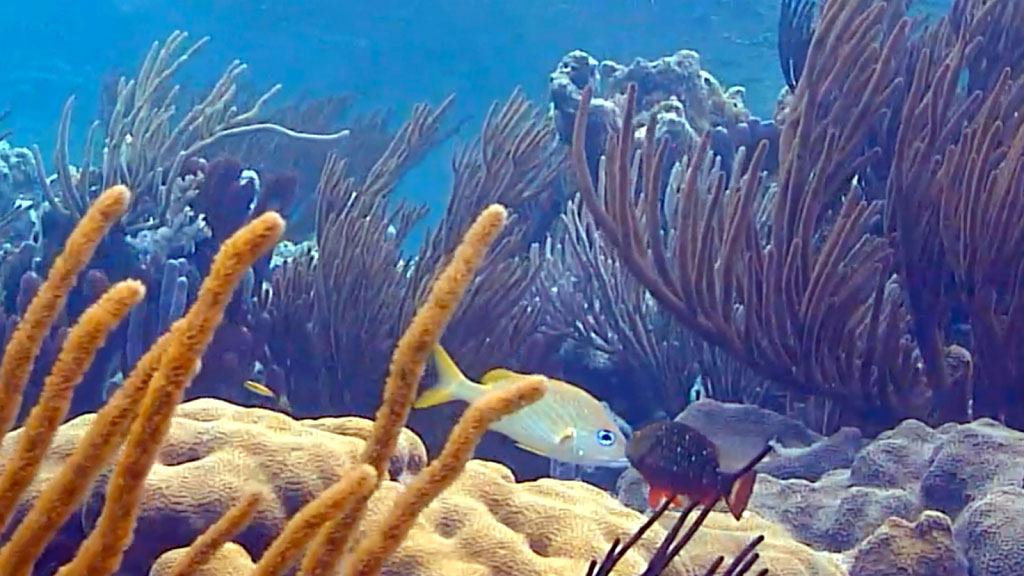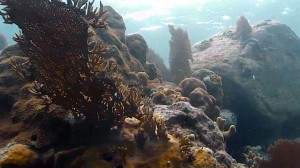It’s easy to do – you’re swimming along in a coral reef and you come across a big soft (Gorgonian) coral and you think to yourself, “what a nice little tree!” and around the next bend you see a large stony (Scleractinian) coral and say (making lots of bubbles) “my, what a big boulder!” Both the little tree and the boulder you’ve just encountered are not what they seem at all – in fact, they are both animals!
Corals are a fascinating group of animals. They are in the phylum Cnidaria, which means they have stinging cells (nematocysts), just like jellyfish and anemones. What’s really unique about most coral species is that they are colonial organisms that rely on a symbiotic relationship between a colony and an algae living inside the coral polyps, known as zooxanthellae, to survive. The zooxanthellae algae are photosynthetic organisms, so they use the sun’s energy to produce sugars that the coral consumes. This food source allows the colony to continue to grow, creating new polyps through budding and building a bigger internal skeleton through calcium carbonate secretion. Many coral skeletons take on the shapes of other objects in nature like branching trees or big rocks and they are sessile (non-mobile) animals, all of which leads many to be surprised when they learn that corals are indeed part of the Animal Kingdom!
Take a look at a variety of coral species on the Cayman Reef Live Cam and give your new knowledge a test run!




